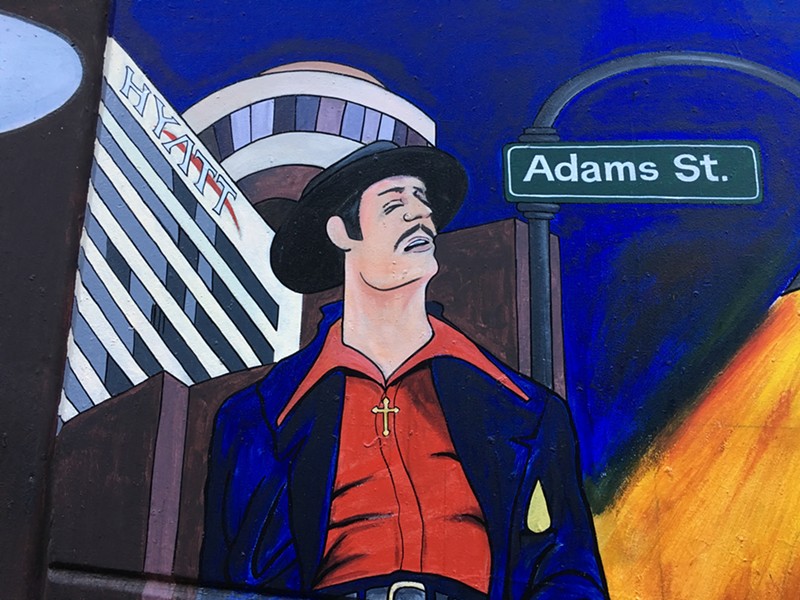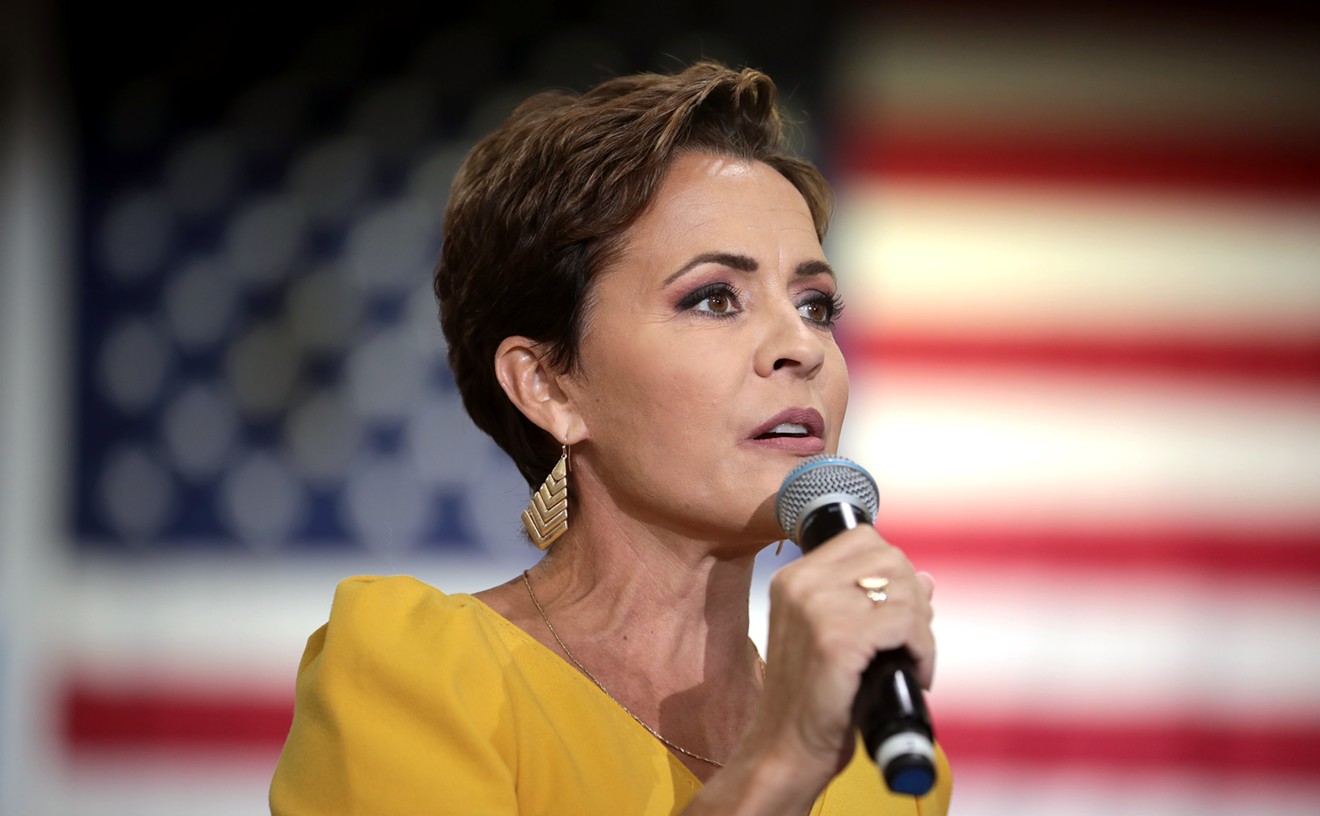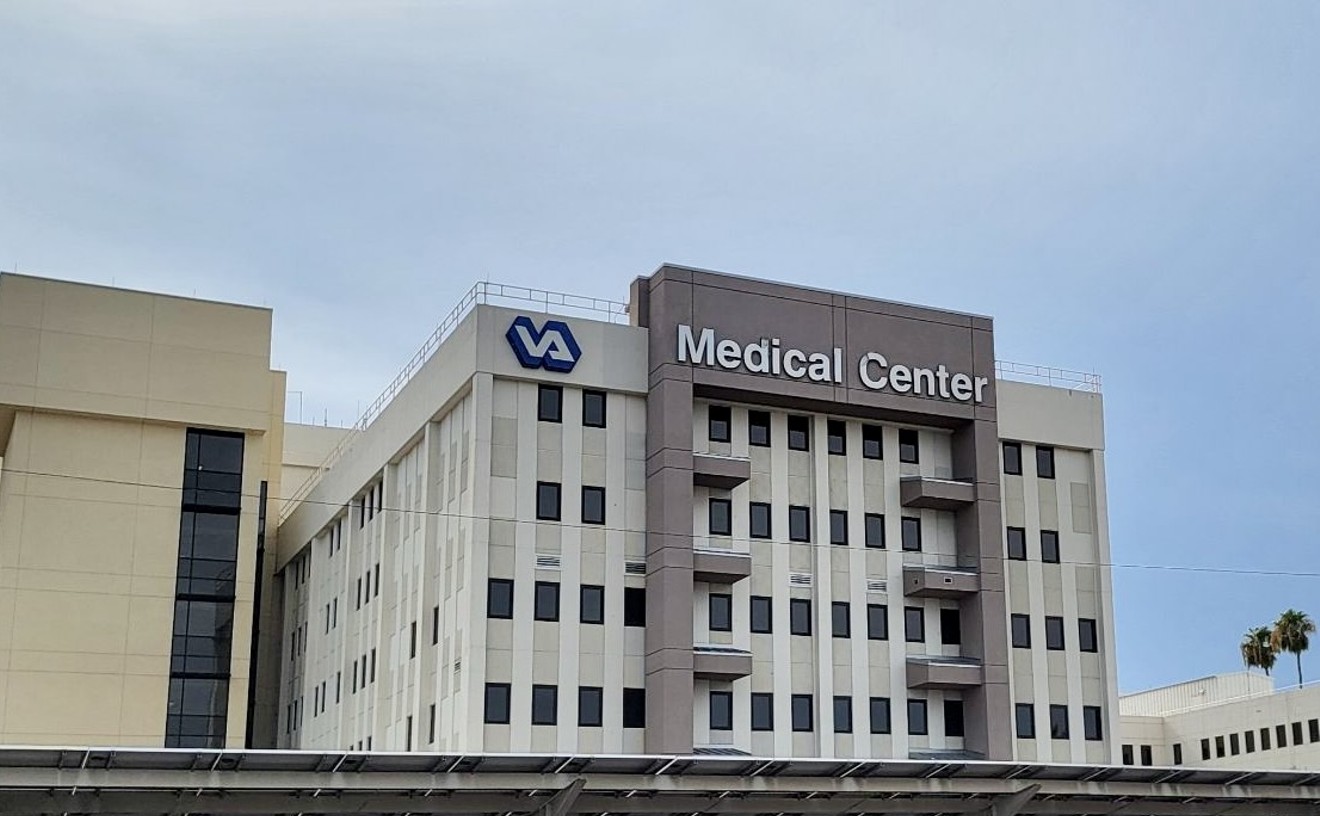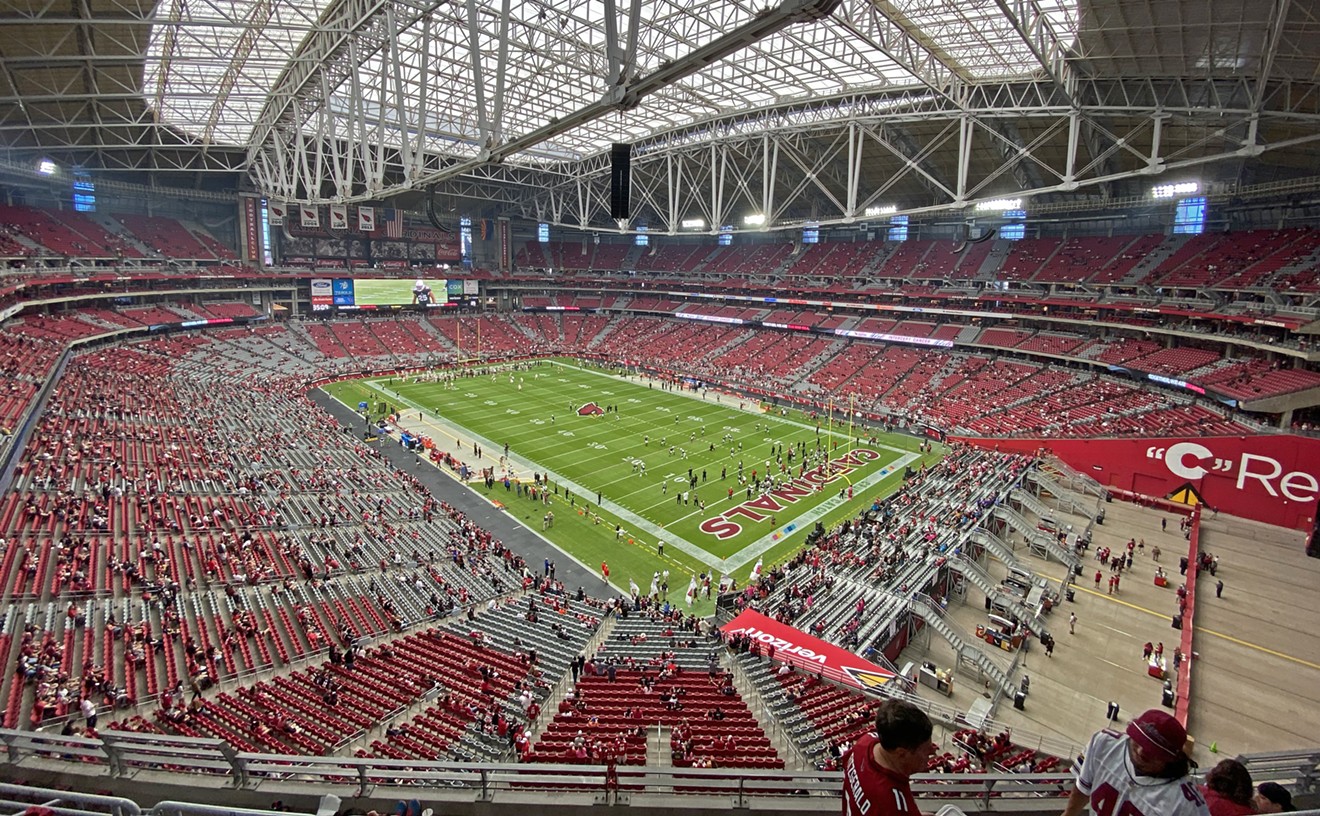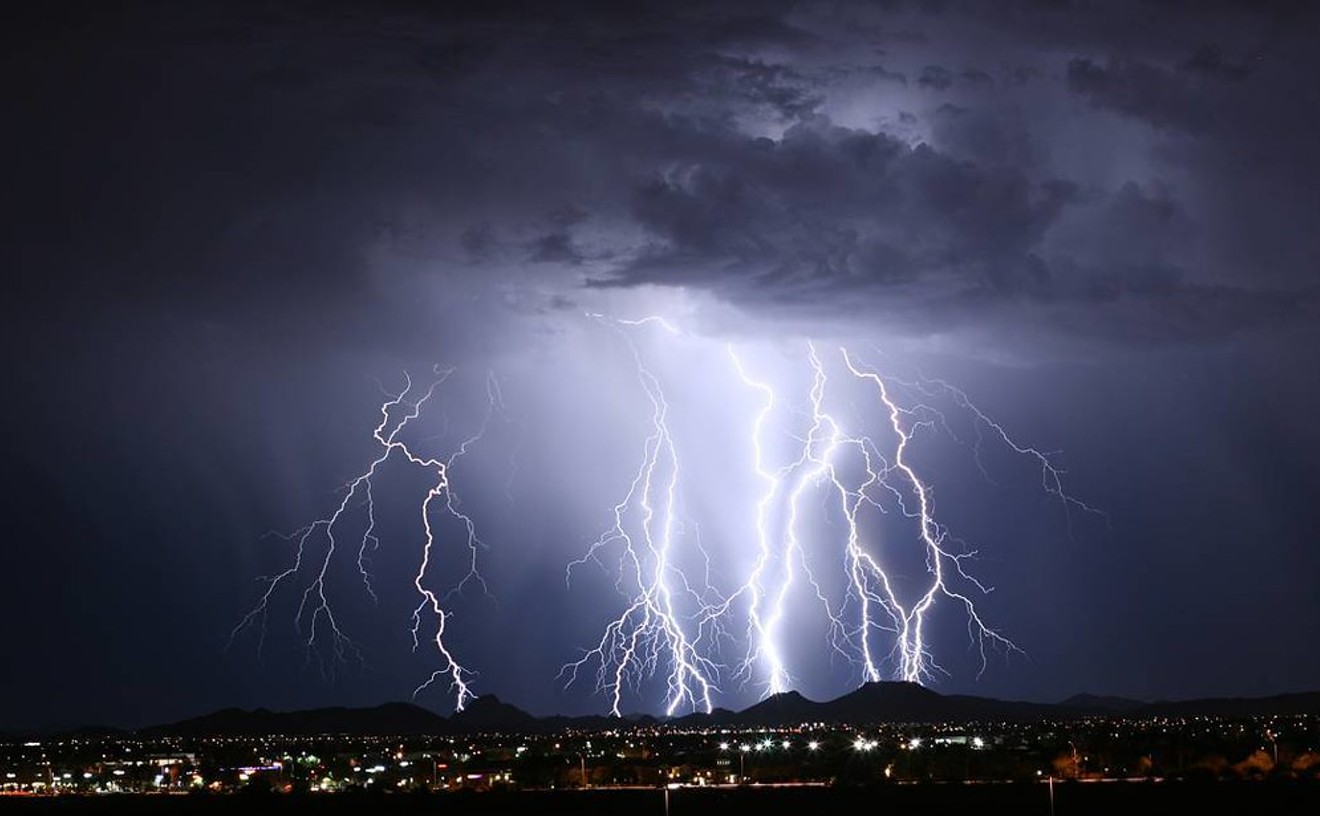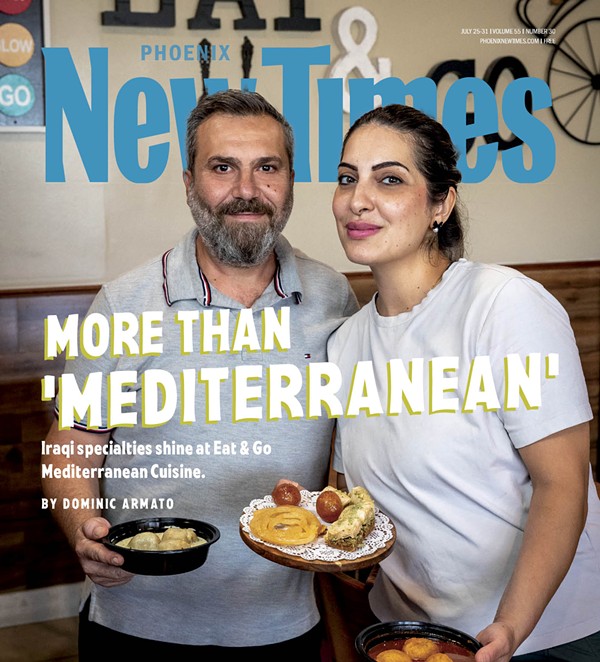On April 12, eight people handpicked by city council members will converge on a conference room on the 12th floor of City Hall. They’ll be joined by council members Michael Nowakowski and Felicita Mendoza, and a slew of city staffers tasked with attending the first meeting of a new ad hoc committee meant to make the final push for the center.
It’s the latest grasp at straws for a city that just can’t seem to get it right on making a Latino Cultural Center a reality, despite the fact that about 40 percent of its community members are Latino.
Thelda Williams launched the latest effort as interim mayor by creating the ad hoc committee on February 28. But the group will sunset on June 30 next year, so there’s more than a little pressure in terms of getting something, or maybe anything, done.
Problem is, the new committee has just 10 members, counting Nowakowski and Mendoza.
And it includes nearly as many business people as artists, including George Garcia, Julian Nabozny, and Jason Rowley. Garcia’s family operates Miracle Mile Deli, and Nabozny is a McDonald’s restaurant owner. Rowley is president of the Phoenix Suns, which commissioned Lalo Cota to paint a Suns-themed mural in Roosevelt Row during the recent push to expand the downtown arena.
“We didn’t just want to have a bunch of artists, because we need to also raise money and figure out the structure and operations for the organization,” Nowakowki said.
The makeup echoes concerns expressed by council member Sal DiCiccio in an October 2017 press release, which called for expanding the Latino Cultural Center’s focus to include sports, food, and other elements of Latino culture. The release drew a heated response from councilwoman Laura Pastor, who branded his efforts a bad case of “white hyper-masculinity.”
DiCiccio issued the release after seeing a lengthy report written by Evonne Gallardo, a California-based consultant Phoenix hired in 2016 to spearhead a Latino Cultural Center needs-assessment and feasibility study. The study has yet to prompt any significant progress on the issue.
Whether this new approach proves helpful or problematic remains to be seen. Either way, it’s clear that fewer voices are being included this time around, at least during this initial phase in the project reset. As of this writing, the city hadn’t even managed to update its website to alert people that the project was getting a new push.

Casandra Hernández Faham is part of a new ad hoc committee for the Latino Cultural Center.
Pablo Robles
Notable exceptions include Casandra Hernández Faham and Gabriela Muñoz. Faham is the executive director for CALA Alliance, and Muñoz is the artist programs manager for Arizona Commission on the Arts. José Andrés Giron, an artist affiliated with multiple Latino arts organizations, is on the new committee as well. So is Erlinda Torres, who spent many years as executive director for the Arizona Latino Arts and Cultural Center, (ALAC).
“This conversation has gone on so long that there’s a whole new generation of artists,” said James Garcia, a local playwright who served on ALAC’s founding board of directors. “Their voices need to be heard.”
Sam Gomez, who heads an art space called Sagrado Galleria, agrees. And he’s got another concern. Gomez worries that groups like Cultural Coalition, which is based in Mesa but has a big Phoenix footprint, could be left out of the conversation. “We shouldn’t be SB 1070-ing anybody, just because of some artificial borders or boundaries,” he said, using Arizona’s anti-immigrant law passed in 2010 to make his point.
Nowakowski said they’ll loop more people in as the process unfolds by creating subcommittees that artists and other community members can join. “We’re hoping to put the group on steroids and work 24/7; the first thing is to find a location, and then set up the subcommittees,” he said. That means at least one significant decision could happen without meaningful public input.
It doesn’t help that there’s nearly two decades of baggage here for the concept of a cultural center.
The drive to open a Latino Cultural Center has roots in an earlier organization called Museo Chicano. It was located on the street level at 147 East Adams Street, inside a city-owned building with several levels of parking, just a crosswalk away from Symphony Hall and the Hyatt Regency hotel.
The city approved nearly $1.4 million in bond funding for Museo Chicano renovations and expansion almost 20 years ago, in 2001. But the improvements didn't happen, and the museum went bust in 2009. Instead, ALAC took over the space after the museum shuttered. It’s located in Nowakowski’s district, so he’s been involved for the long haul. Today, the committee has just under $1 million to work with.
Back in 2016, the city renewed its efforts.
The project got bogged down in bureaucracy.
Gallardo conducted her study, using a process that included talking with various stakeholders, holding three town halls for community members, leading several focus groups, and undertaking an online survey that garnered more than 250 responses.
The approach drew criticism from some, including Gomez. whose south Phoenix gallery couples community activism with visual and performance art by Latino, Chicano, and indigenous artists. “The people leading the process are out of touch with the community and our needs,” he said.
Gallardo issued her report in 2017, which included a market analysis and case studies, along with a facility concept, business model, and capital costs. The report also addressed programming, such as cultural festivals, classes, exhibits, performances, a community kitchen, and a gift shop.
But the project stalled as the city faced several changes.
In 2018, Gail Browne announced she’d be retiring as executive director for the city’s office of arts and culture, and Mayor Greg Stanton resigned to run for Congress. Mitch Menchaca heads arts and culture now, and Kate Gallego was recently sworn in as mayor.
Gallego hasn’t responded to Phoenix New Times’ repeated requests for comment. But Menchaca, who started last December, is clearly eager to see the project move forward. “We have to stop speculating and nail something down,” he said.
That’s easier said than done, because pitfalls abound.
For starters, the pot of money isn’t growing any bigger.
The original bond was for $1,386,000. Today, it’s down to $997,902, according to Menchaca, who cites two reasons for the lower number.
First, the city council voted to defer $302,000 of the funding in 2012. Then it spent $80,458 on Gallardo’s study. It’s possible, he said, that the council will decide to restore, reprioritize, or redistribute the $302,000 once sufficient capacity exists.
But the math still doesn’t work.
Gallardo concluded that creating a new Latino Cultural Center could cost as much as $4.5 million, if the city built a new 22,620-square-foot facility. That’s the amount of space she determined Phoenix would need for robust programming. A new, smaller space with 18,330 square feet would still run $3.6 million, according to her report.
She crunched the numbers for renovating an existing space, too. For the larger space, it would run $2.3 million. A smaller space would require $1.8 million.
That means it’ll take more than bond funding to make it happen. So, Nowakowski said the new committee will look at several options – including corporations, foundations, and individual donors.
Ideally, he’d like to see the city turn Latino Cultural Center operations over to a new nonprofit, which could create an endowment to help cover ongoing costs.
By the time that happens, support for the center could be lost.
“Honestly, everybody is feeling exhausted and tired of waiting,” Gomez said. “It’s taken over 15 years to get this started, which just kills the momentum.”
The actual cost will depend on what the city decides to create, according to Larry Ortega, a Sunnyslope artist who’s also executive vice president for Collier International, a real estate services and investment firm with offices downtown. He’s part of the new Latino Cultural Center committee.
“I’m looking at how we can create a sustainable model,” he said. “But let’s make it world class.” Ortega readily admits that the bond funding won’t be nearly enough. “One or 2 million dollars won’t do it.”
There’s another challenge, as well.
Before the city can check off all the Latino Cultural Center boxes, it needs to find a location. And the site they come up with could be far different than what people are expecting.
Despite all the visioneering undertaken by community members who turned out for Gallardo’s focus groups, it may come down to simply finding an existing building where the center can take shape.
“We’re looking at city-owned properties,” Nowakowski said.
He’s already got several in mind, including two located at Hance Park.
One is the red brick building that sits just north of Phoenix Center for the Arts. The center is located on Third Street just south of McDowell Road, in an arts nexus that includes the Roosevelt Row arts district and longtime arts venues including Phoenix Art Museum and Phoenix Theatre.
The other is a section of the Burton Barr Central Library, where Nowakowski envisions the children’s section being relocated to another floor, to make space for a Latino Cultural Center that could use the library’s auditorium, and grassy areas nearby.
Nowakowski is also eyeing Grant Park, where Gallardo held one of her town hall meetings. It’s located on Third Avenue near West Buckeye Road. The park is already home to a pool and recreation center, with amenities that include a gymnasium, multipurpose field, playground, picnic area, and pool.
“There’s been some talk of unused space at Heritage Square, or even the first floor of a private development,” Menchaca said.
Whatever the location, Torres wants to be sure the city invests adequate resources. “The city has invested in other cultures, with places like the Irish Cultural Center and the Japanese Friendship Garden,” she said. “We want to be sure they devote enough resources to the Latino Cultural Center.”
The city routinely gives grants to cultural organizations, including several that focus on Latino arts and culture. Last year, they included CALA Alliance, Cultural Coalition, and Xico Arte y Cultura, among others. CALA Alliance, (which prefers the term Latinx in place of Latino/a), creates cultural experiences that foster understanding among people in the Americas. Xico operates a south Phoenix art space, and programs a trio of shipping container galleries in Roosevelt Row.
And it included ALAC, a group the city has been supporting for years. Today ALAC is headed by artist Elizabeth Toledo, whose work you'll find on a collaborative mural painted in an alley behind ALAC in 2017.
ALAC has had a sweet deal since taking over the Museo Chicano space 10 years ago, paying just $10 a year, along with taxes, to lease more than 5,358 square feet of retail space, along with 2,756 feet of storage space, in the heart of downtown.
That’s about to change, because Phoenix is getting ready to invite proposals for redevelopment in that area. ALAC’s lease expired in August 2018, but the city is letting them stay for now, according to a spokesperson for the city’s office of community and economic development, who said the city plans to help ALAC look for a new home.
Problem is, that could complicate the larger Latino Cultural Center effort.
The timing could give ALAC a louder voice than other Latino groups. And that could be a problem for those who believe the new center, should it ever go beyond board rooms and blueprints, needs to represent the full depth and breadth of the Latino, Chicano, and indigenous community in metro Phoenix.
While Phoenix is ramping up its latest efforts, Latino artists are creating and sharing work in and beyond the city, in an eclectic assortment of places from art museums and galleries to neighborhood alleys and outdoor preserves.
And Gomez is wondering whether a Latino Cultural Center in downtown Phoenix is the best way to go, in part because so many Latino creatives and community members are being priced out of living downtown.
He’d prefer to see the city support several microcenters around the city, giving more neighborhoods ready access to Latino arts and culture. And he thinks more outreach is a must. “The city has changed since they started, and if they need to start the engagement process again, so be it,” Gomez said.
At this point, that’s not happening.
Instead, it looks like the city will rush to get it done, instead of finally getting it right.
"This time it has to happen," Torres said. "The city's time is up."

